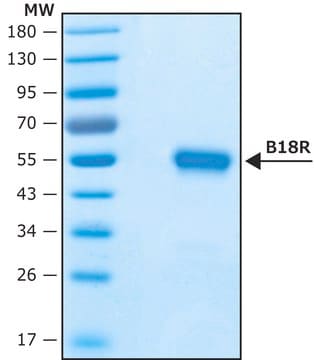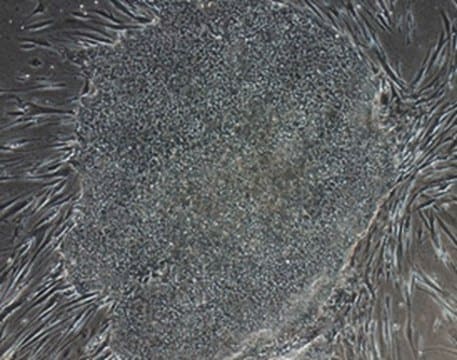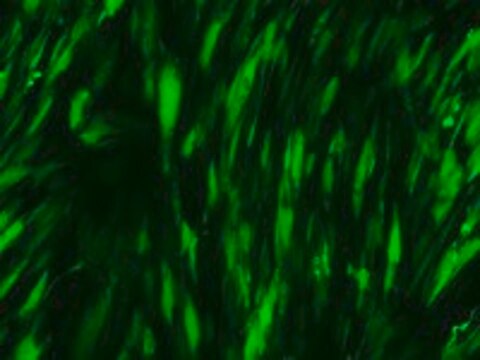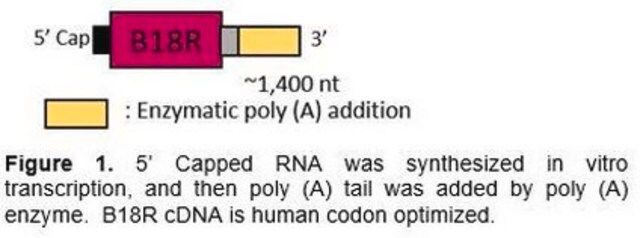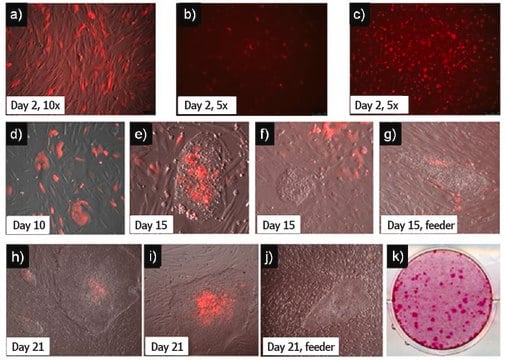GF156
B18R, Human Recombinant Carrier-Free
liquid, >98% (SDS-PAGE), <0.05 ng/μg cytokine (LAL test)
Synonym(s):
B18R protein, Recombinant B18R
About This Item
Recommended Products
biological source
human
Quality Level
Assay
>98% (SDS-PAGE)
form
liquid
specific activity
≥1.3 x 10e6 units/mg protein
mol wt
Mw 38,389 Da
concentration
0.5 mg/mL
technique(s)
cell culture | stem cell: suitable
impurities
<0.05 ng/μg cytokine (LAL test)
input
sample type induced pluripotent stem cell(s)
solubility
water: soluble
suitability
suitable for molecular biology
shipped in
dry ice
General description
Application
Physical form
Storage and Stability
Further dilutions should be made into appropriate buffer or medium.
Analysis Note
Disclaimer
Storage Class Code
12 - Non Combustible Liquids
WGK
WGK 1
Flash Point(F)
Not applicable
Flash Point(C)
Not applicable
Certificates of Analysis (COA)
Search for Certificates of Analysis (COA) by entering the products Lot/Batch Number. Lot and Batch Numbers can be found on a product’s label following the words ‘Lot’ or ‘Batch’.
Already Own This Product?
Find documentation for the products that you have recently purchased in the Document Library.
Articles
The Simplicon™ RNA Reprogramming Technology is a next generation reprogramming system that uses a single synthetic, polycistronic self-replicating RNA strand engineered to mimic cellular RNA to generate human iPS cells.
Protocols
Stem cell reprogramming protocols to generate human induced pluripotent stem cells (iPSCs) including viral and non-viral RNA based methods.
Our team of scientists has experience in all areas of research including Life Science, Material Science, Chemical Synthesis, Chromatography, Analytical and many others.
Contact Technical Service